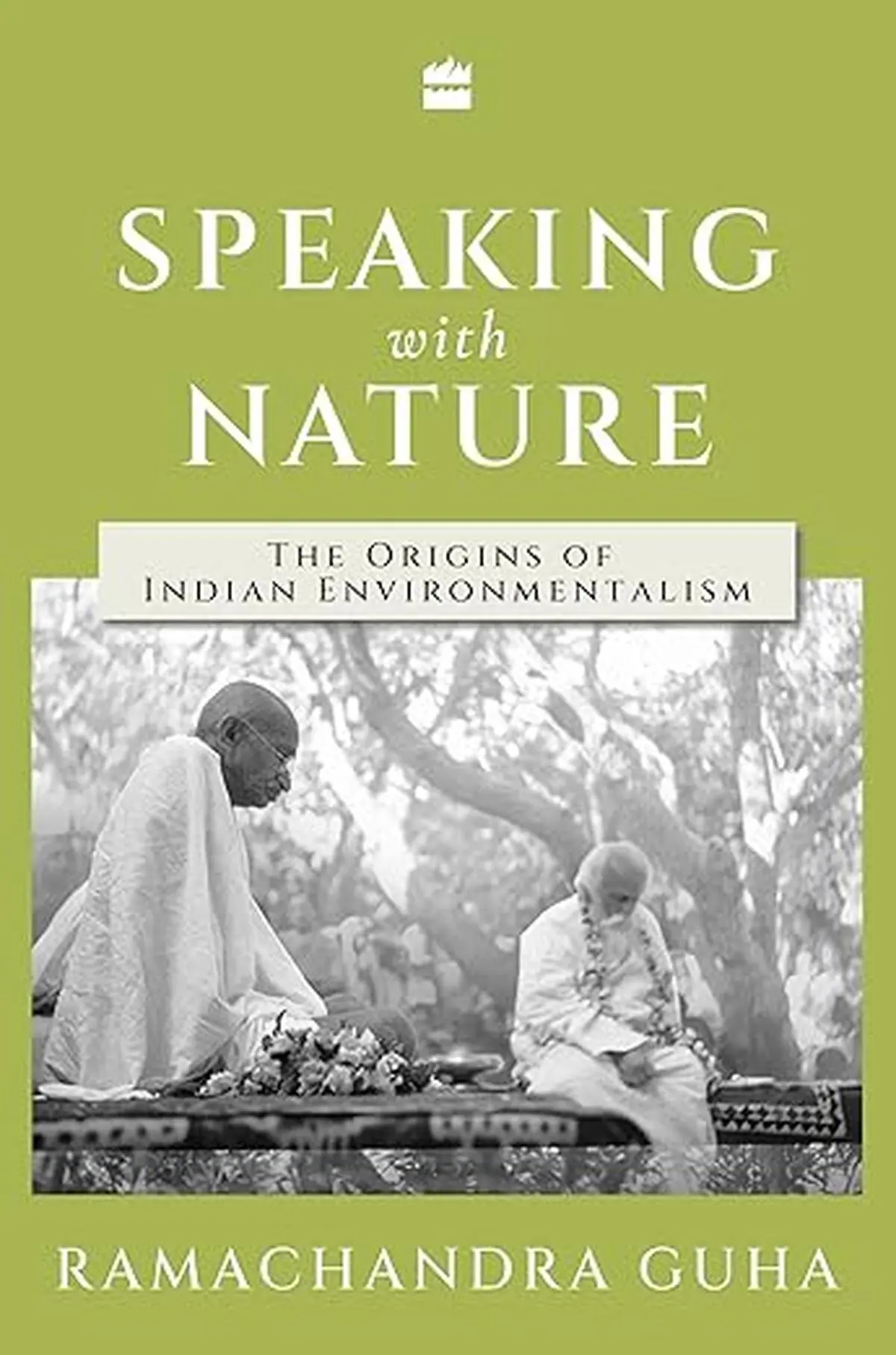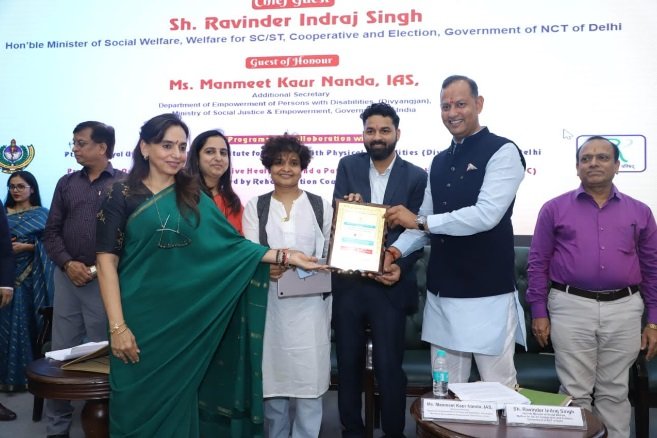Tagore was one of the founders of Indian environmentalism,” Ram Guha told me, when I had finally managed to grab a seat near him and start a conversation. “Really?! How so?” I gasped. “You wait till my next book comes out,” he said. This was at a lit fest in Thiruvananthapuram in early 2024.
I waited keenly to read Speaking with Nature, a book described by Guha as a “group portrait” of 10 nation-shapers who were also the founding figures of environmentalism in India. Their ideas, once pervasive, have somehow sunk to the bottom of the public consciousness now. This makes Speaking with Nature a marvellous resurrection text, a powerful genesis story of our country’s environmental movements and ideas. The personalities it profiles, in order, are Rabindranath Tagore, Radhakamal Mukerjee, J.C. Kumarappa, Patrick Geddes, Albert and Gabrielle Howard, Mirabehn, Verrier Elwin, K.M. Munshi, and M. Krishnan.
I learnt from the book that among Tagore’s 10 maxims of educational philosophy, the first one was: “The child should be brought up in such environments as would provide him with opportunities of direct and close contact with nature…” This was in the 1920s, almost 90 years before Richard Louv published his now-famous book, Last Child in the Woods: Saving Our Children From Nature-Deficit Disorder (2005), which set off a trend of nature-based learning in the US. Tagore set down these principles when he created Santiniketan, at a time when the neuroscience behind the importance of nature contact for healthy development in children was still unavailable.
The poet had always been acutely aware of the way nature shapes the human psyche: this is one of the reasons why birds, trees, butterflies, bees, and rivers proliferate in his writings. Tagore said: “We can draw a deep and secret joy from nature only because we feel a profound kinship with it.” Tagore was conscious of biophilia, or the innate love of human beings for nature, 50 years before Edward O. Wilson coined the term in 1984.
Speaking with Nature: The Origins of Indian Environmentalism
By Ramachandra Guha
Fourth Estate India
Pages: 440
Price: Rs.799
I read about the contributions of Radhakamal Mukerjee for the first time in Speaking with Nature. In the early 1900s, he was reminding everybody that a nation pursuing GDP growth will starve its masses because the metric “measures production and not distribution”. Much later, the economists Amartya Sen and E.F. Schumacher backed up this claim with theory and data. Mukerjee campaigned in favour of commons like wetlands, village tanks, and grazing grounds, opposing their handover to the state, which, he said, “has brought about a complete loss of initiative of the people… [and] have fallen into desuetude and disrepair”.
Rooted belief
The book’s title marks a beautiful political stance. To speak “with”, act “with”, think “with” nature is a philosophy that informs Guha’s own oeuvre as well as those of the personalities he has researched for this book. The fact that people have been thinking along these lines for a long time gives a rootedness to the belief, placing it among people and communities. It also contrasts Indian movements with the ones in America and Europe, which are usually considered to be the birthplaces of environmentalism. Guha helps us disagree by showing how the Indian narrative began much before the Chipko movement in the 1970s. The archival research presented in these pages is astonishingly vast.
Also Read | Moments in the sands of time
What stands out starkly is the prescience of these individuals. “…[C]oal and oil economies lead to conflict among nations,” said J.C. Kumarappa, economist and close associate of M.K. Gandhi. Kumarappa also put his finger on the modus operandi of capitalism—the externalising of costs—when he said: “[I]f we draw our requirements from the ends of the Earth it becomes impossible for us to guarantee the conditions of production.…”
I hope that people involved in various ecological campaigns and resistance movements—people without whom India would have been stripped of its green cover over the past decade—will pick up this book so that it can inform their work. Let me explain why.

Speaking with Nature is group portrait of 10 nation-shapers who were also the founding figures of environmentalism in India.
| Photo Credit:
By Special Arrangement
In Speaking with Nature, environmentalism is never presented as an isolated ideology but as one intertwined with considerations of caste, spirituality, economics, politics, poetry, farming, and science. The anthropologist Jason Hickel stressed the need of ecological movements to align with labour movements, gender movements, peasant movements, etc., as all of them are exploited by the same structures. But they lie scattered. Guha’s book shows what they will look like if they are united, and how that unity can be meaningful for India. Guha calls it “livelihood environmentalism”, as opposed to full-stomach environmentalism. It is an ecosophy practised by and relevant for all groups of people, from Adivasis to Dalits to peasants and the general public. And, as Guha explains, it is, in many ways, uniquely Indian.
Through Verrier Elwin, Guha makes us question whether urban culture is as sophisticated as it is made out to be. And shows how the animist world views of Gonds, Baigas, and other Adivasi groups foreground our relationship with the life around, broadening the scope of our experiences. Elwin wrote: “The real culture of the Gonds and Baigas is to be found in their songs and dances. Here is poetry free of all literary convention and allusions; a poetry of Earth and sky, of forest, hill and river….”
He also warned that the real danger in forestlands comes not from big cats and reptiles but from the state apparatus and its weapon of subjugation: violence. He wrote that forest-based communities often manage their lands better than the state does. Now we know this to be true from biodiversity studies comparing the conditions of community-managed and state-managed forests across India.
Also Read | A fragile paradise: Review of ‘Birnam Wood’ by Eleanor Catton
Guha does not unquestioningly worship his subjects though. For instance, he shows how K.M. Munshi was in favour of mass tree planting but also propagated Hindutva. Or that Albert Howard never considered caste dynamics in his ecocentric approach to farming although agriculture is deeply embedded in caste politics. Thus, in all the chapters, we are constantly reminded of Indian realities even if the larger issue at stake here is global.
There is not a page that does not speak directly to the multitude of ecological crises besetting India at present and the environmental movements that have taken shape in response. Speaking with Nature made me stroll around and reflect on questions like what would Albert and Gabrielle Howard, the pioneers of organic farming, have said about the Supreme Court verdict on genetically modified mustard or what stand J.C. Kumarappa would have taken on the opening of Chhattisgarh’s forests for coal mining. How would Tagore and M. Krishnan feel about the plans to axe the extraordinarily biodiverse forests of Great Nicobar to make a grandiose commercial city?
As Guha writes in his epilogue, developing countries cannot dilute environmental standards giving growth as an excuse. This kind of growth is self-devouring, as the historian Julie Livingston pointed out. Guha concludes: “[I]n fact, for reasons [outlined in this book]… densely populated countries with fragile ecologies need to be even more responsible in how they use nature.”
Yuvan Aves is an award-winning author, naturalist, and environmental activist.



